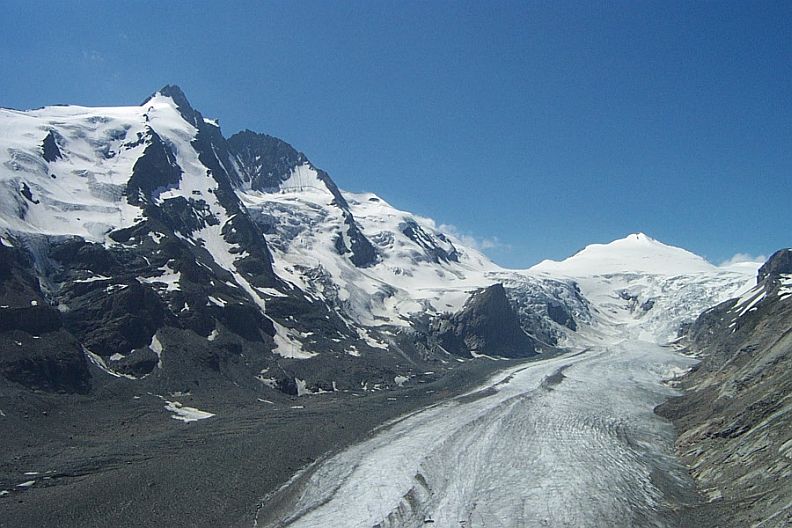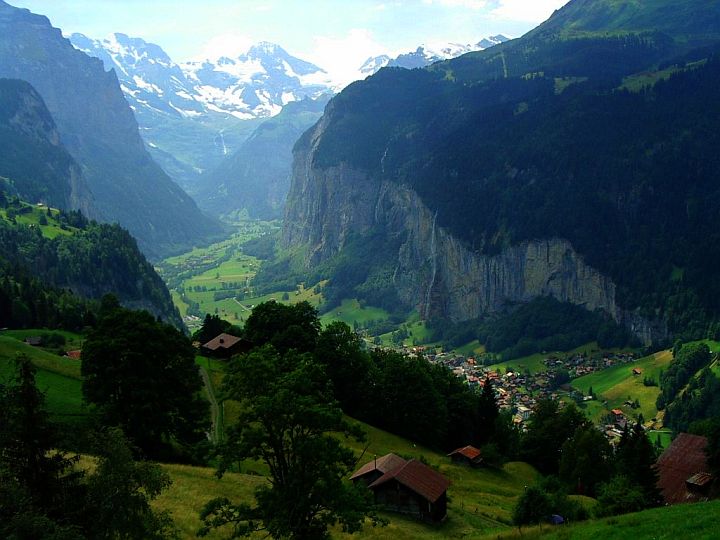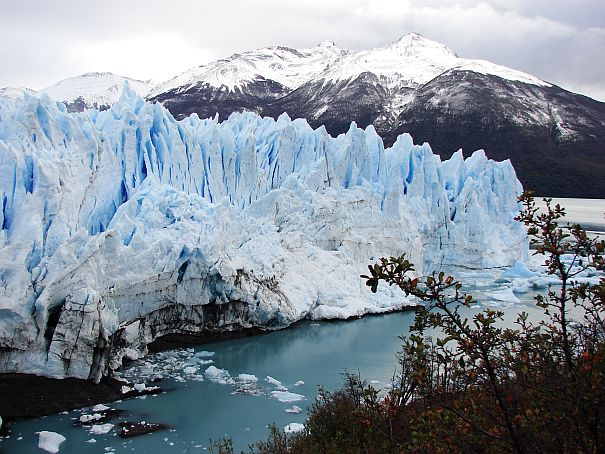Glaciers

Glaciers are huge frozen rivers of ice that move very slowly down a mountain. In the case of continental ice sheets however, such as those found in Greenland and Antarctica, they radiate out from the areas of thicker inland ice to the thinner coastal ice, eventually breaking off (calving) into the ocean and becoming large icebergs.
There are three main sections to these great bulwarks of ice: the area of accumulation at its source, the river of ice itself, and the lower end known as the terminus.
A glacier is formed when more snow is accumulated than can melt away in summer. Ironically, however, they grow much faster in a relatively warm climate than in a very cold one. The time it takes snow crystals to be transformed into ice in a warm climate can be as quick as 1 to 20 years versus as long as 300 years for very cold climates!
This is because snow crystals have to break down through several structural changes before they become compacted into solid ice, and melt water actually accelerates this process. Of course there still has to be less melt than accumulation.
You can demonstrate this process by making snowballs with dry snow and wet snow. Really cold dry snow is impossible to compress into a hard snowball, but add some liquid water to the equation and it will compress into an almost solid ball of ice right before your eyes!
The speed at which the ice moves depends on the steepness of the slope where it lies, its thickness, the load of snow in the accumulation area, and the amount of liquid water under it. The ice can move as little as half an inch a day to as much as 100 feet a day!
The speed is greater in the center than at the edges just like a river and for the same reason -- the banks on the sides create extra friction that slows the flow rate down.
Glaciers provide great benefits to humans. The huge masses of ice grind up rock and dirt, mixing them in the process, and generating very fertile soils, as well as watering those soils with mineral rich glacial runoff. This abundant fertility can be witnessed in the beautiful, green alpine valleys of the
Swiss Alps.





